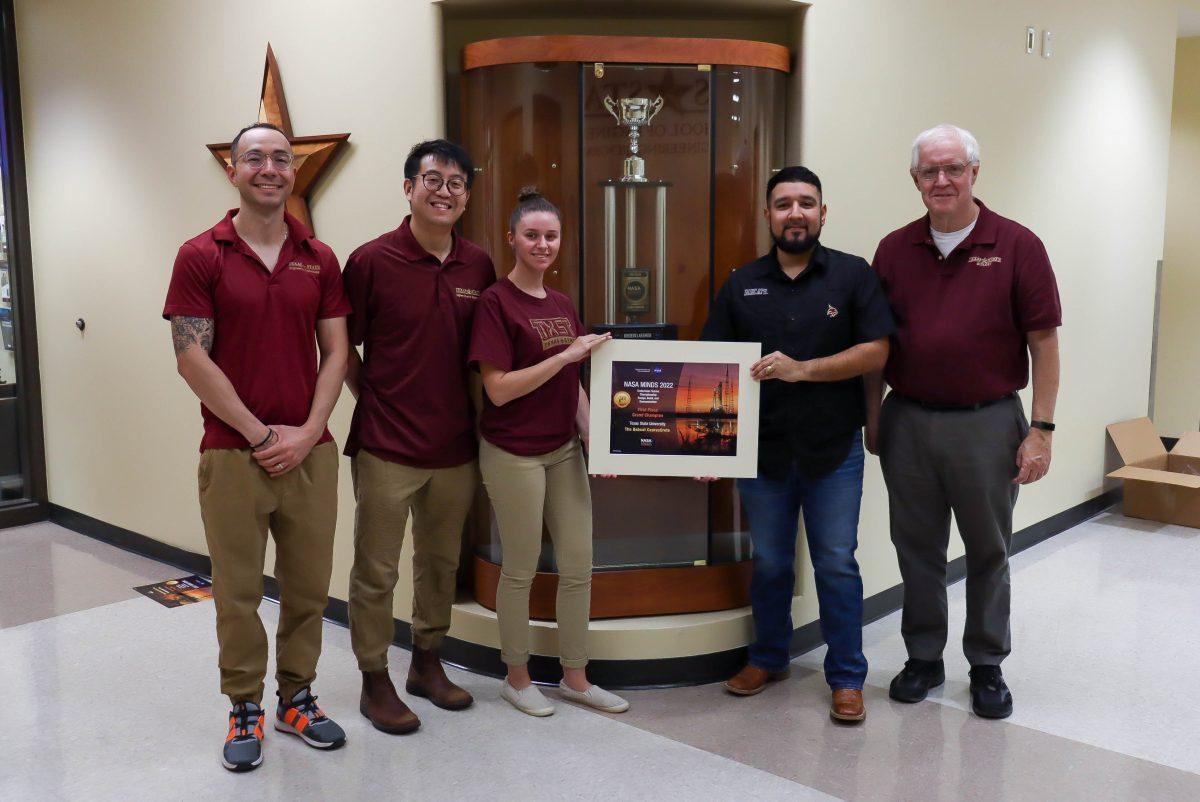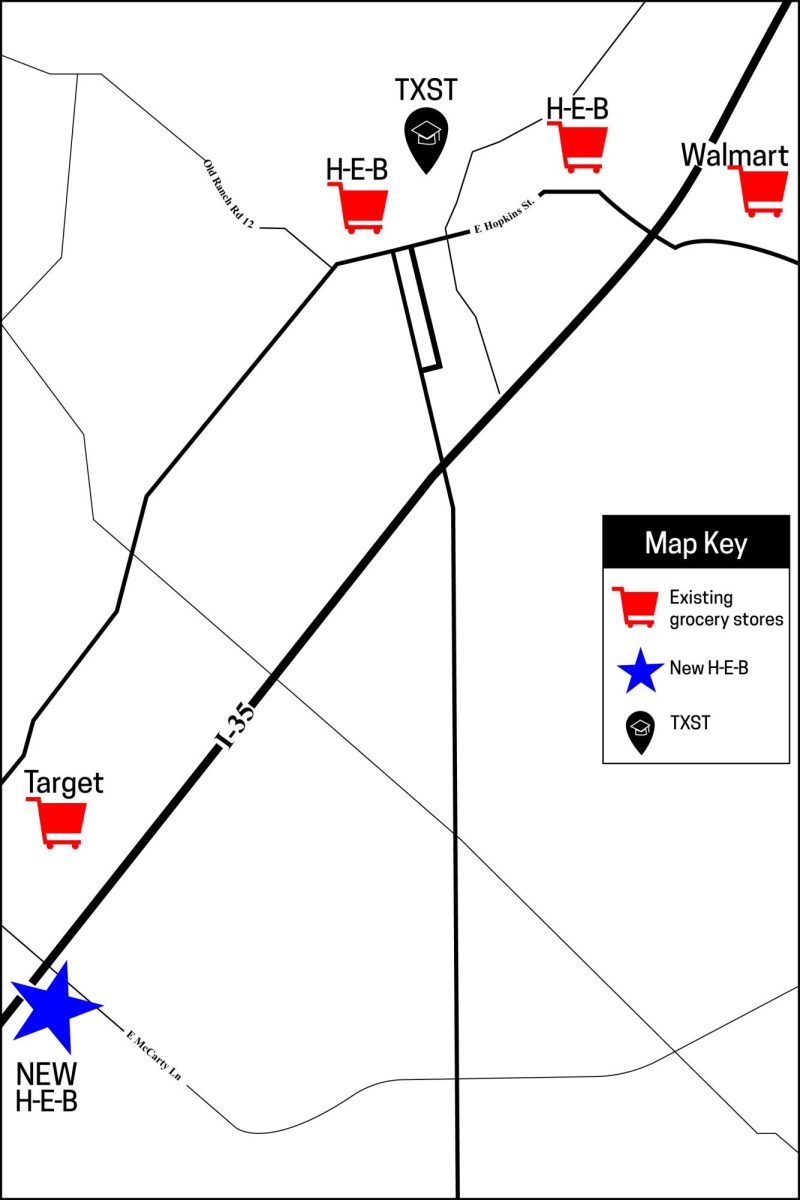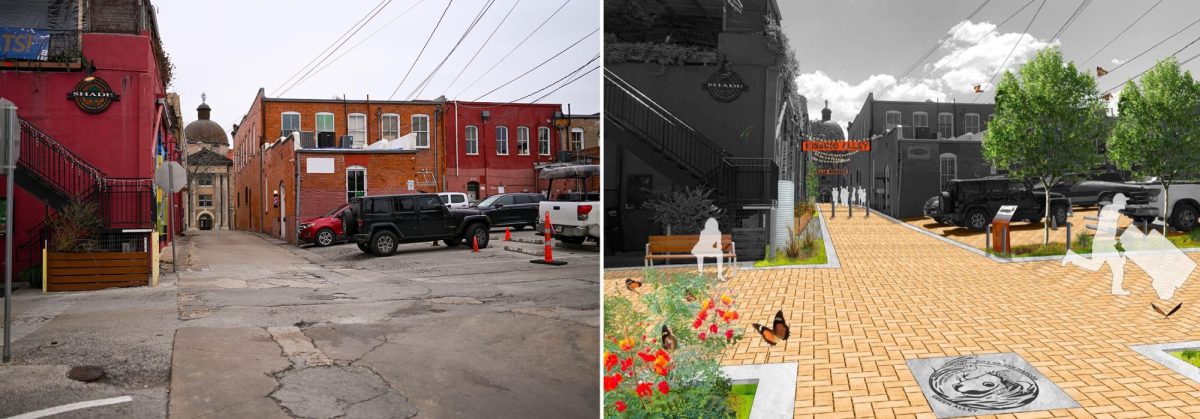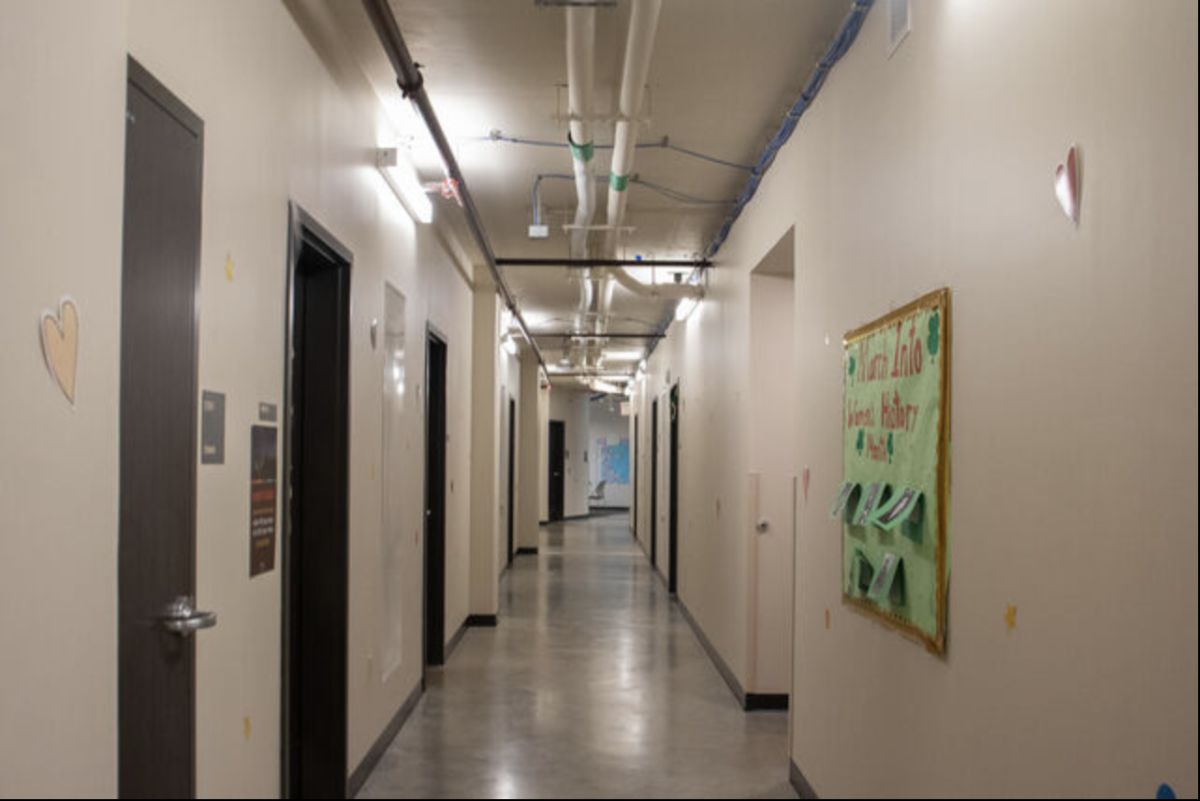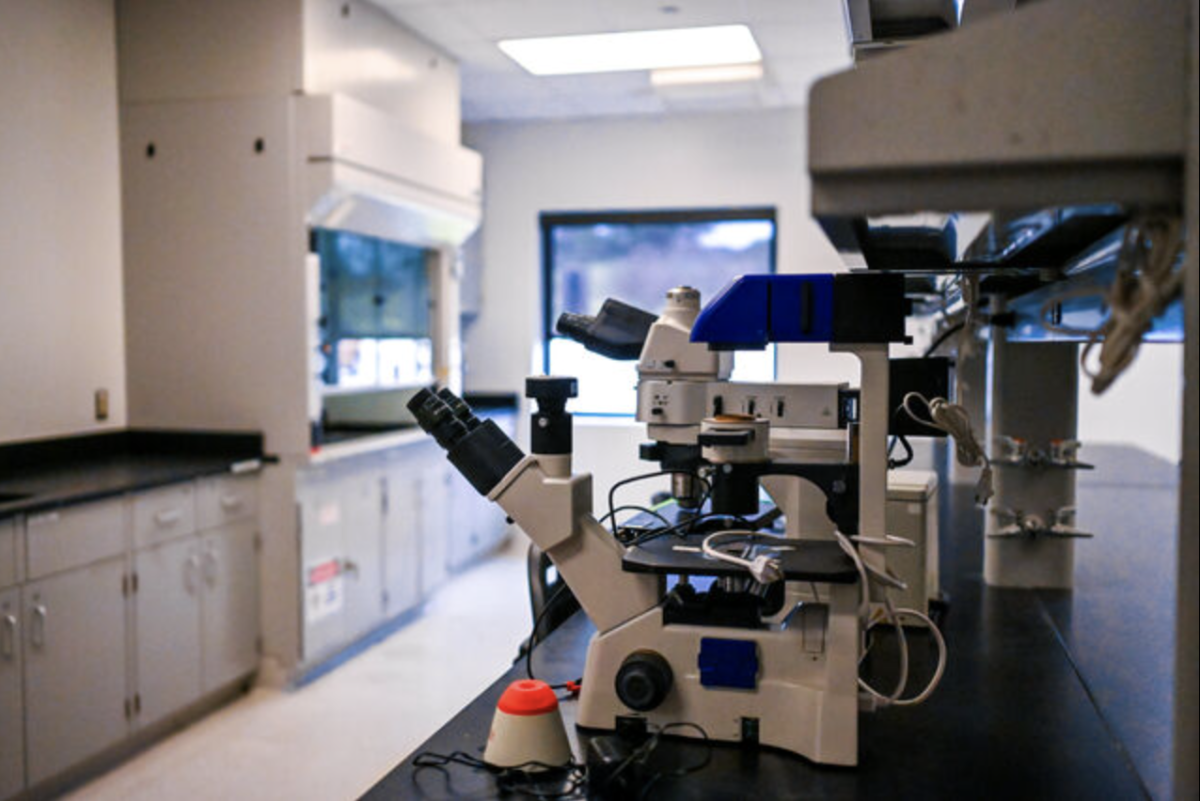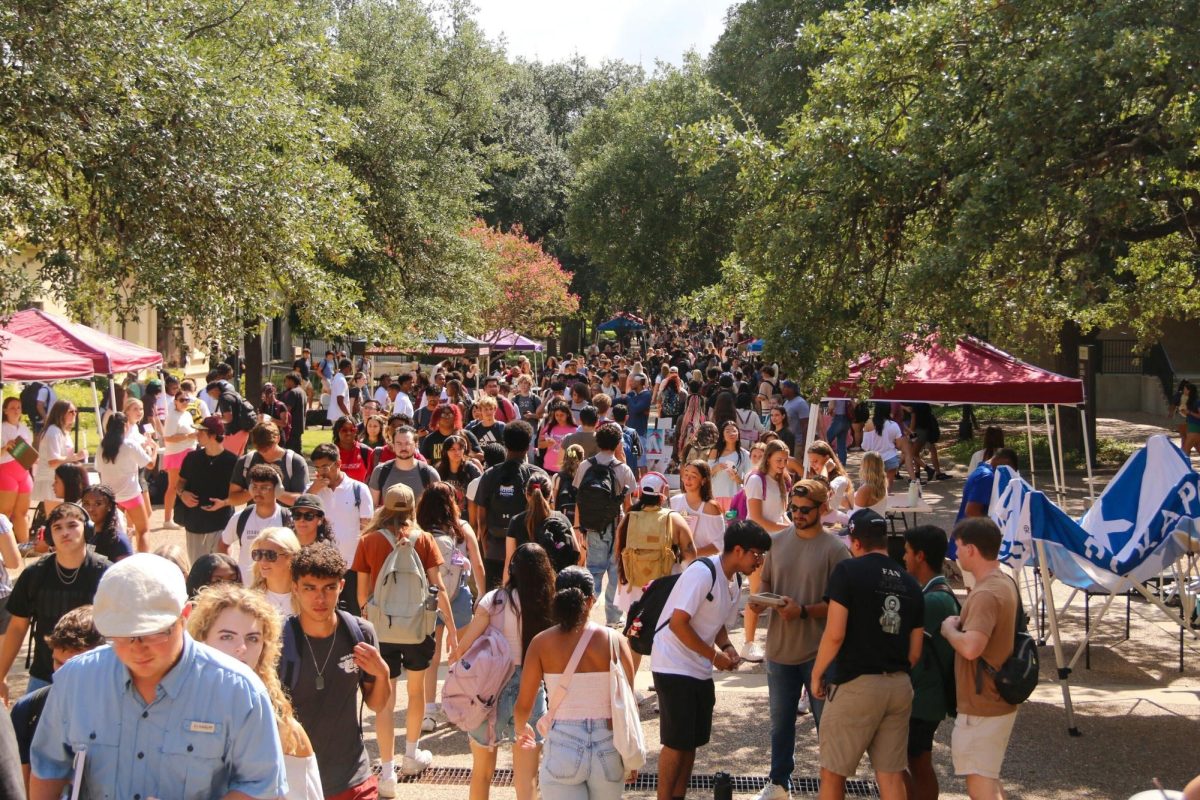After receiving a $1,500 NASA grant in 2021, Texas State University received a $50,000 grant in April from NASA’s Minority University Research and Education Project (MUREP) Small Business Technology Transfer for members of the university to further develop research for the CaerusCrete project.
CaerusCrete started as an undergraduate project and is a technology concept for using lunar resources, like bacteria and geopolymer, as building materials for structures on the moon.
The idea is that using locally available resources on the moon could potentially reduce the cost and complexity of building lunar structures and make long-term habitation and exploration more feasible.
Xijun Shi, assistant professor in the Ingram School of Engineering and CaerusCrete overseer, said planning to build structures on the moon is a very different concept than Earth because resources like water, electricity and limestone are not readily available.
“Those mechanisms can be used for the hardening part of construction material, that’s why we can learn from nature,” Shi said. “There is a lot of outgoing research going on but there was not so much research for lunar applications. We were one of the very first to do that.”
Shi said the most significant advantage of using CaerusCrete as compared to other construction materials is that there aren’t several alternatives for lunar constructions.
“First of all we want to use locally available material, our concrete materials use lunar materials and other materials available on the moon. Secondly, eventually, we want to use 3D printing for those materials to facilitate construction,” Shi said. “These are significant advantages as compared to conventional construction.”
Texas State University President Kelly Damphousse said Texas State getting the NASA grant goes to show the quality of the program.
“Both projects, the [2021 project] and the current one, are involved with students. It is not just our faculty who are doing these inventions, students are involved with this,” Damphousse said. “I run into students all the time that are working in laboratories with our faculty members.”
According to Shi, Texas State qualified for the MUREP grant because it is a minority-serving institution. He recruited a large majority of undergraduate students to be involved in CaerusCrete, pushed for outreach and invited speakers to talk about this lunar building concept.
Shi said the $50,000 from NASA is going to be used to plan for future developments, pay the contributing faculty members a salary, travel for undergraduate students and research and invitations for more speakers to come and talk about similar innovations.
“This is a very unique topic for undergrad and grad students alike. They have opportunities to communicate with NASA… and potentially intern or work for NASA,” Shi said. “So this strengthens students’ resume and provides them with new opportunities.”
The CaerusCrete team first got a $1,500 grant in the beginning stages of the project in 2020. This money was only enough to provide them with the needed materials but not pay the undergraduates who were contributing.
“Through this grant, we were able to develop an initial relationship with NASA, especially in our second year, when we won first prize and beat more than 20 teams from different universities,” Shi said.
Rodolfo Castillo, a civil engineering senior, said contributing to the CaerusCrete project helped him get into graduate school at Texas State and hone his research skills.
“I found it really cool to even see if this was possible. We had used bacteria the year before and it did not completely work but the next year was different,” Castillo said.
Damphousse said that there are a lot of Texas State students that are attuned to these innovations and will see this grant as an opportunity.
“Those are the students we want to recruit to come here to help our faculty but also to create the next generation of researchers and inventors and discoverers,” Damphousse said.
Castillo said one of the biggest things he learned was how to properly give a presentation to people who are looking to potentially invest in him or his project.
Shi said CaerusCrete would have new teams each year that will give different students the opportunity to participate in this project.
“We want to continue participating in NASA MINDS undergrad research,” Shi said. “Our milestone is to first finish concept validation in the lab, and if it is working we can think about doing something real on the moon.”
Damphousse said this NASA grant is the perfect example of how Texas State students are building something that is innovative and extraterrestrial.
“If they can, again, prove the concept like they did already, then it becomes a larger grant and then it becomes reality and the reality might not be for 10 years…but it has got to start here,” Damphousse said.
For more information on the NASA grant, visit its website.
Categories:
Texas State gets NASA grant for lunar construction project
Lucciana Choueiry, News Reporter
May 15, 2023
Bobcat CaerusCrete team posing with award after winning NASA MINDS Grand Champion at the underclassmen level on May 5, 2022.
From left to right: Anthony Torres, Xijun (Jeff) Shi, Taylor Laramore, Rodolfo Hernandez, Robert McLean.
0
Donate to The University Star
Your donation will support the student journalists of Texas State University. Your contribution will allow us to purchase equipment and cover our annual website hosting costs.
More to Discover



